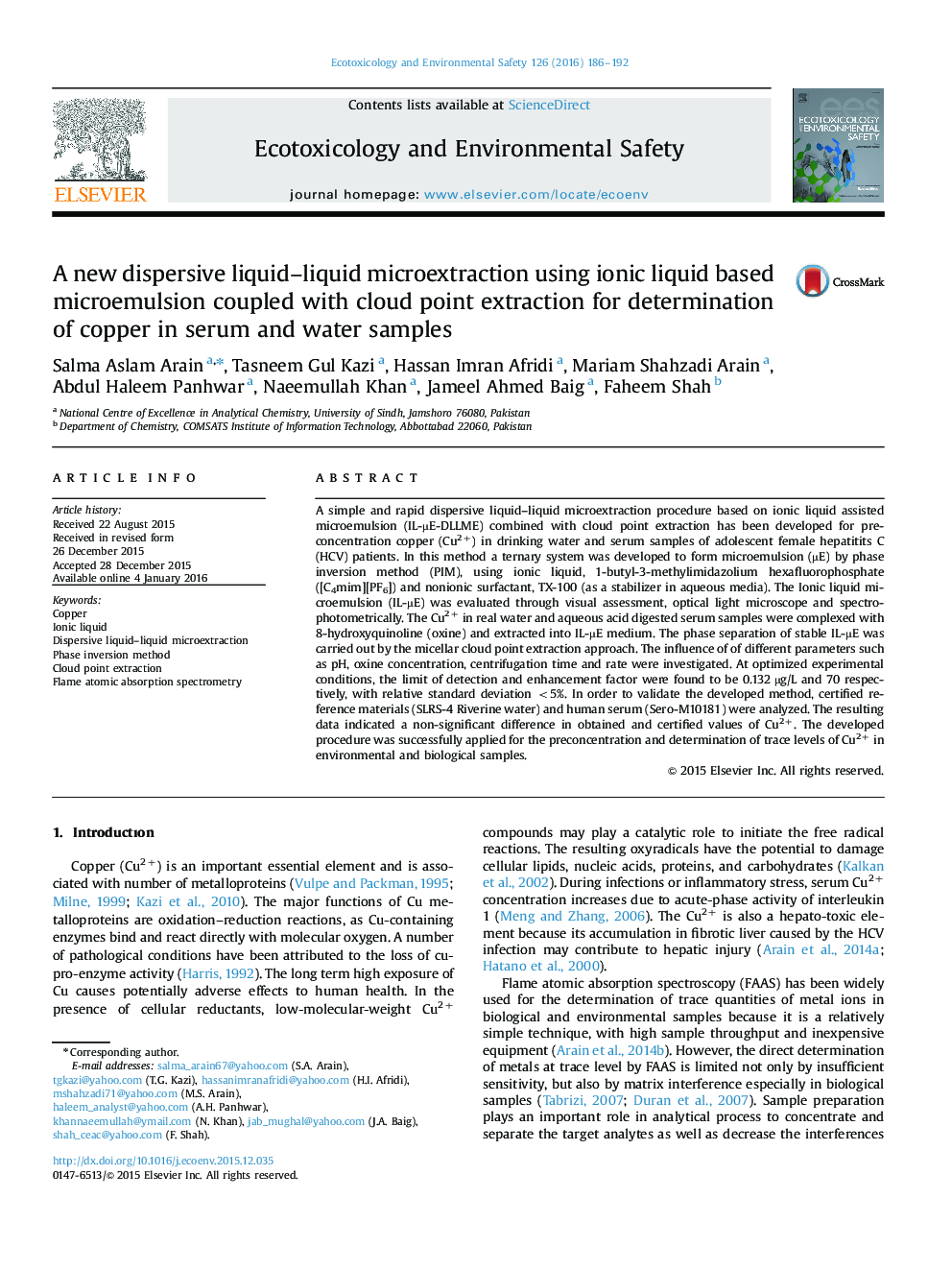| Article ID | Journal | Published Year | Pages | File Type |
|---|---|---|---|---|
| 4419225 | Ecotoxicology and Environmental Safety | 2016 | 7 Pages |
•Innovative ionic liquid based microemulsion applied as an extractive media for metals.•The microemulsion was stabilized by Triton X100 in aqueous media for >1 week at 25 °C.•IL-µEM is a hydrophobic/ hydrophilic microdomains, enhance the extraction efficiency.•The hepatitis C patients have high levels of Cu in serum than healthy controls.
A simple and rapid dispersive liquid–liquid microextraction procedure based on ionic liquid assisted microemulsion (IL-µE-DLLME) combined with cloud point extraction has been developed for preconcentration copper (Cu2+) in drinking water and serum samples of adolescent female hepatitits C (HCV) patients. In this method a ternary system was developed to form microemulsion (µE) by phase inversion method (PIM), using ionic liquid, 1-butyl-3-methylimidazolium hexafluorophosphate ([C4mim][PF6]) and nonionic surfactant, TX-100 (as a stabilizer in aqueous media). The Ionic liquid microemulsion (IL-µE) was evaluated through visual assessment, optical light microscope and spectrophotometrically. The Cu2+ in real water and aqueous acid digested serum samples were complexed with 8-hydroxyquinoline (oxine) and extracted into IL-µE medium. The phase separation of stable IL-µE was carried out by the micellar cloud point extraction approach. The influence of of different parameters such as pH, oxine concentration, centrifugation time and rate were investigated. At optimized experimental conditions, the limit of detection and enhancement factor were found to be 0.132 µg/L and 70 respectively, with relative standard deviation <5%. In order to validate the developed method, certified reference materials (SLRS-4 Riverine water) and human serum (Sero-M10181) were analyzed. The resulting data indicated a non-significant difference in obtained and certified values of Cu2+. The developed procedure was successfully applied for the preconcentration and determination of trace levels of Cu2+ in environmental and biological samples.
Graphical abstractFigure optionsDownload full-size imageDownload as PowerPoint slide
